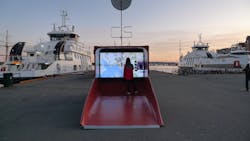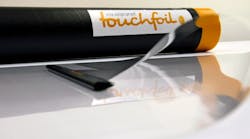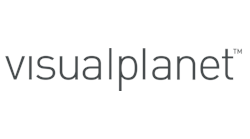From mountain-top kiosks, to bus shelters in Russia, bustling railway stations and busy airports, combining way-finding and live travel and local information with wider promotional and entertainment messaging is bringing interactivity to underutilised spaces, generating revenue streams and improving the customer experience.
Live timetabling eliminates the need to produce printed collateral that can quickly become obsolete. Passengers can instantly personalize their experience as they are able to instantly manipulate the screen to provide relevant, real time content and the burden on multi-lingual staff is also reduced as users can switch between languages.
Larger screens can open up compelling ROI opportunities: a touch-enabled screen can display product or promotional messages, providing a truly unique advertising medium in a highly public location – quickly attracting attention from passers-by when deployed creatively. For example, clever positioning within a bus shelter - guarantees high footfall, combined with a likely period of waiting time - the interactive elements can be used to provide a distracting activity and source of entertainment, whilst simultaneously driving brand engagement and maximising the advertising potential to the public, in an otherwise underutilised location.
Visualplanet’s Single User touchfoil has been engineered for single user interaction, whilst withstanding the demands of public access in a self-service environment. The touchfoil is a clear flexible film touch sensor, which is applied to glass to add touch capabilities. The unique benefits of visualplanet’s touchfoil make it the touch sensor of choice in unattended interactive public facing applications located within potentially challenging operating environments for self service applications, such as wayfinding, ticketing and timetabling.
Dan Spencer, product manager, Visualplanet, comments, “Our Single User touchfoil development has focused on vital performance characteristics within the mass transportation sector: the ability to work consistently through thick glass, low maintenance and reliability in the field. Small format touch sensors have become an integral part of our day to day lives, so consumers demand a natural touch experience on a large format screen that replicates the experience with which they have become so familiar. Furthermore, design plays an increasingly important role in our customers’ product development process; our behind-glass sensor offers a superior design aesthetic as well as heightened security and reliability, combining progressive design and glass selection with optimised performance.”
Touchfoil works through glass up to 20mm thick which means that an existing install base could be upgraded to include touch capability. Positioned on the back of the glass, the touch sensor is protected within the panel. Flush against the glass with zero bezel, the touchfoil doesn’t interfere with the process of IP rating the enclosure to be immune to ingress from water and dust – making it easy to maintain and keep clean.
The touch sensor can even be used whilst the user is wearing gloves.





